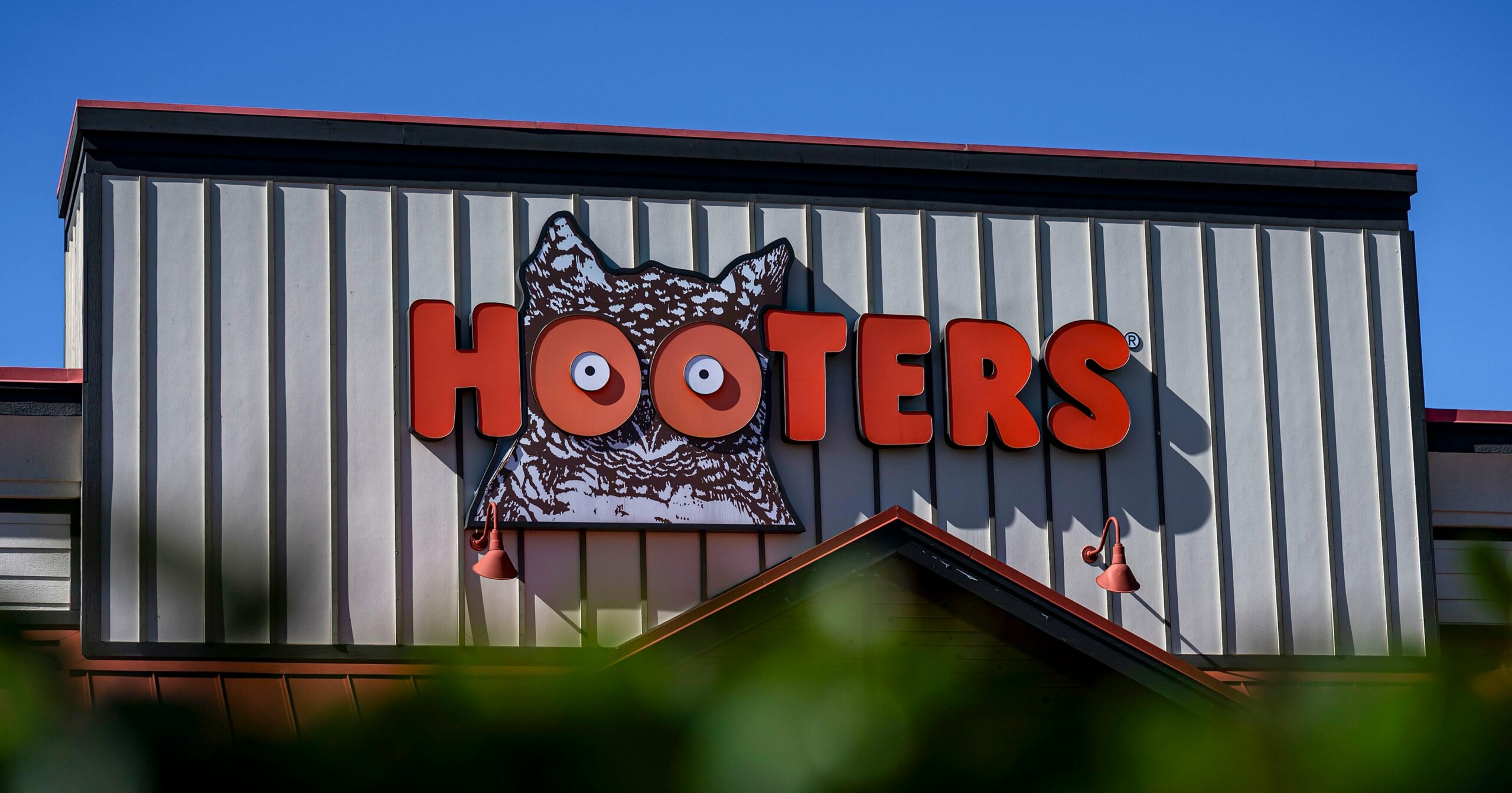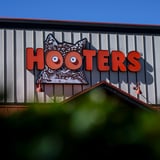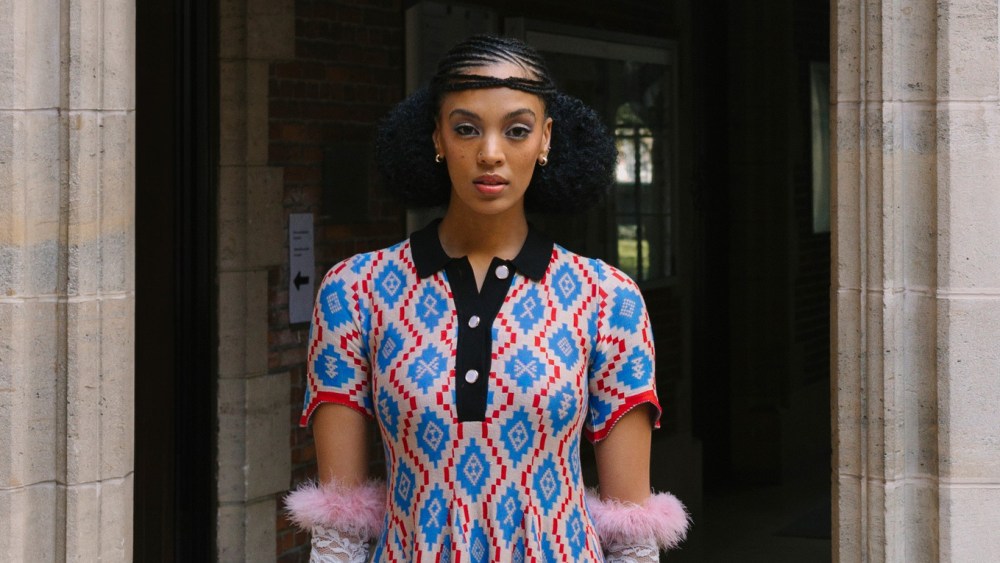I would see it from the backseat driving south, glowing orange on the shoulder. It was just a blip there, on my way home from the mall, a softball game, or the orthodontist, freshly tightened braces rearranging the new adult teeth in my head. Still, the bulging eyes seemed to follow me the whole way home – as if I were the one with the buzzing neon sign above, blinking “GAY!” in big block letters. But it was just a Hooters billboard on the 15 freeway, a towering orange and white altar to my confusion and isolation as a budding queer girl in the early 2000s.
Though I’ve still never been inside one, I knew what Hooters stood for, even back then. I couldn’t escape the Hooters shticks on TV and in movies, which, in that era, were about as common as casual fatphobia and nods to Chuck Norris. From Adam Sandler to the writers of “The Office,” it seemed no one could resist a crack at the “breastaurant” chain.
By the time I got my first period, Hooters was at its most powerful, with over 400 locations around the world. But today, as Hooters of America, LLC, is set to file bankruptcy after closing dozens of locations – including the one off the 15 freeway – I’m reminded of all that the Hooters logo has come to represent, not only to my younger queer self, but to women everywhere.
The story of Hooters is exactly as slapstick as one might guess: A group of white dudes from Clearwater, FL, opened the flagship as a glorified bit in 1983, naming it after a line in a Steve Martin stand-up set. The Hooters Six, as they liked to be known, would wind up accidentally pioneering one of the most successful restaurant chains in world history, eventually piloting a Hooters brand credit card, Hooters casino and hotel, and, in 2003, a Hooters airline.
But the heyday wouldn’t last. Today, the company is more than $300 million in debt after a downward spiral that began in 2011, when the casino and hotel went bankrupt. The chain was dealt another blow in 2017, when Hooters PR had to contend with a damning study from the University of Tennessee, which analyzed the psychological impact of working in a “sexually objectifying restaurant environment” like Hooters. Hooters Girls, the official title of the waitstaff, and women working in similar food service roles reported high levels of anxiety and disordered eating.
This dark history behind Hooters comes as no surprise considering the empire was built on the commodification of women’s bodies and helmed by a series of men who look like thumbs with mustaches. Still, the infamous Hooters Handbook – dictating how Hooters Girls can dress, act, and even eat – is a stunning monument to misogyny.
The document details strict uniform requirements that make the Army seem lax. Servers are required to wear makeup and come to work “photoshoot-ready.” Throughout the chain’s history, the handbook has stipulated everything from the amount of jewelry servers are allowed to wear, to the kind of pantyhose they have to squeeze into, to how slouched they have to wear their white socks so their legs look leanest.
Technically, Hooters Girls aren’t “servers” at all. Instead, they’re classified as entertainers, a distinction that allows hiring managers to discriminate under the guise that a certain look is fundamental to the success of the business. Similarly, it’s been widely reported that Hooters Girls have to sign an agreement acknowledging that the Hooters concept is based on female sex appeal and therefore the work environment will frequently feature jokes and innuendo at their expense.
While Hooters corporate has always feigned a blushing innocence, it’s a given that at the restaurants, boobs are as much on the menu as buffalo wings and cheeseburgers. Women’s chests are seen as commodities, yes, but also costumes, even gags. And while the future of the chain is uncertain, the mark it made on my developing psyche is forever. Those tight, white tank tops and tiny, orange booty shorts (which have recently only gotten shorter) were once the perfect kindling for my flaming gay panic.
It’s a strange feeling, to be deeply insulted by a business and also know there’s a part of you – even if it’s buried deep – that wants exactly what they’re selling. Driving past the Hooters on the 15 elicited a frantic moral scramble within me. To be surrounded by beautiful women in low-cut tops? Yeah, that sounds like heaven. But queer women are often caught between worlds as both the objectified and the objectifier. Hooters wasn’t built for me – it’s a bachelor party in restaurant form, a playground for men who think women’s bodies are hilarious. If I also wanted boobs in my face, was I just as bad as them? Was I something worse?
Of course women and queer people today have a lot more to worry about than the Hooters Six and the flimsy outfits they dreamed up. As depressing as it is to admit, a part of me yearns for the days when a woman’s body was more punchline than battleground.
But as we contend with the possibility of a Hooters-less world, I’m sending some care and soothing to the little gal in the backseat on the 15, face aglow with shame in the light emitted from that logo and its penetrating eyes. It’s clear to me now that the real shame belongs to those who profit off the exploitation of boobs, not the people of infinite genders who want to stick their faces in them. It also belongs to anyone in 2025 who still forces their employees to wear pantyhose. Embrace the cellulite, you cowards.
Emma Glassman-Hughes (she/her) is the associate editor at PS Balance. In her seven years as a reporter, her beats have spanned the lifestyle spectrum; she’s covered arts and culture for The Boston Globe, sex and relationships for Cosmopolitan, and food, climate, and farming for Ambrook Research.



